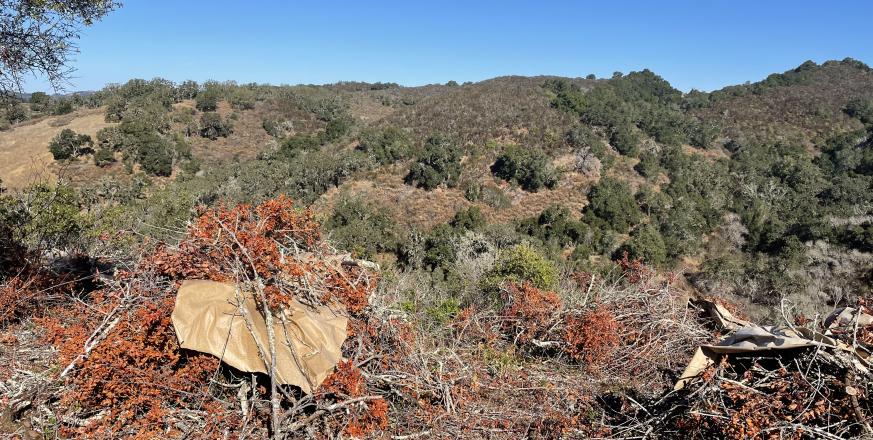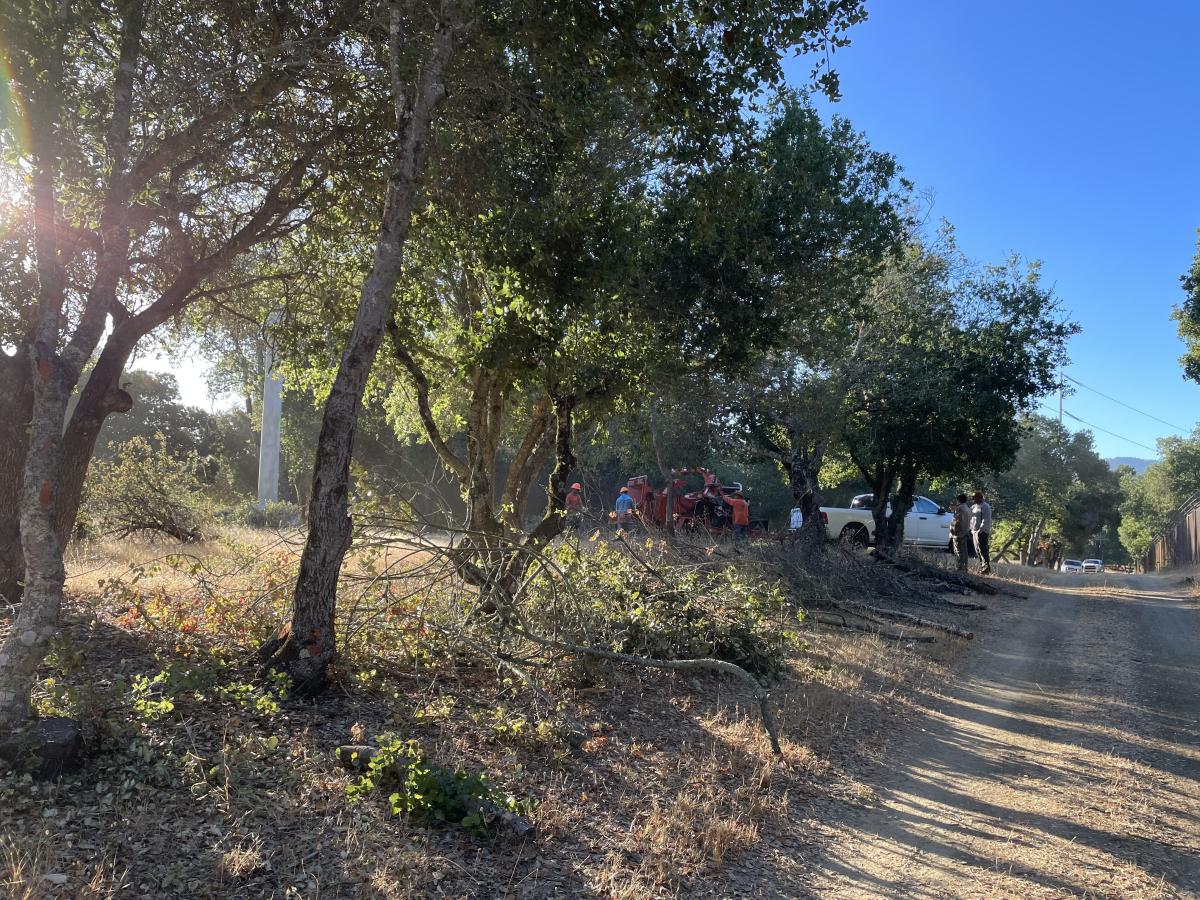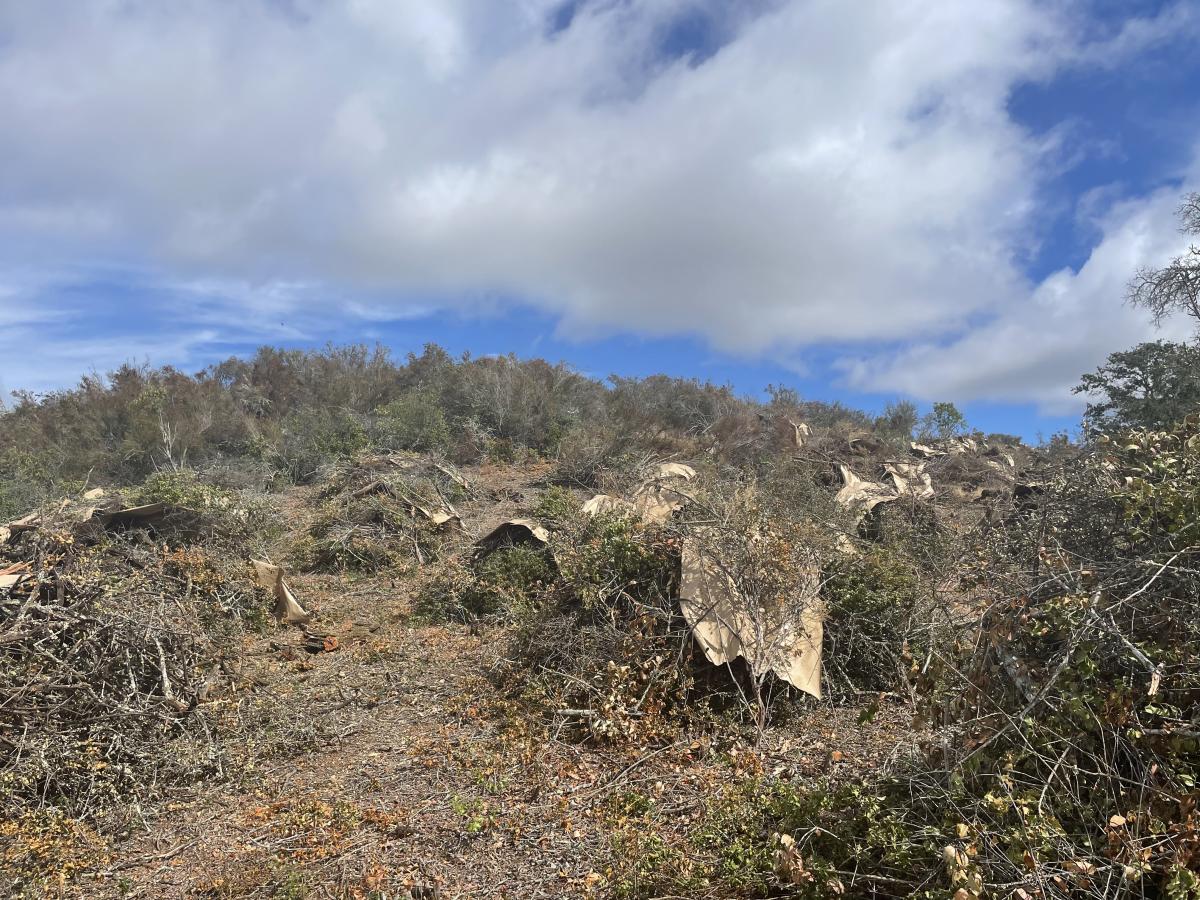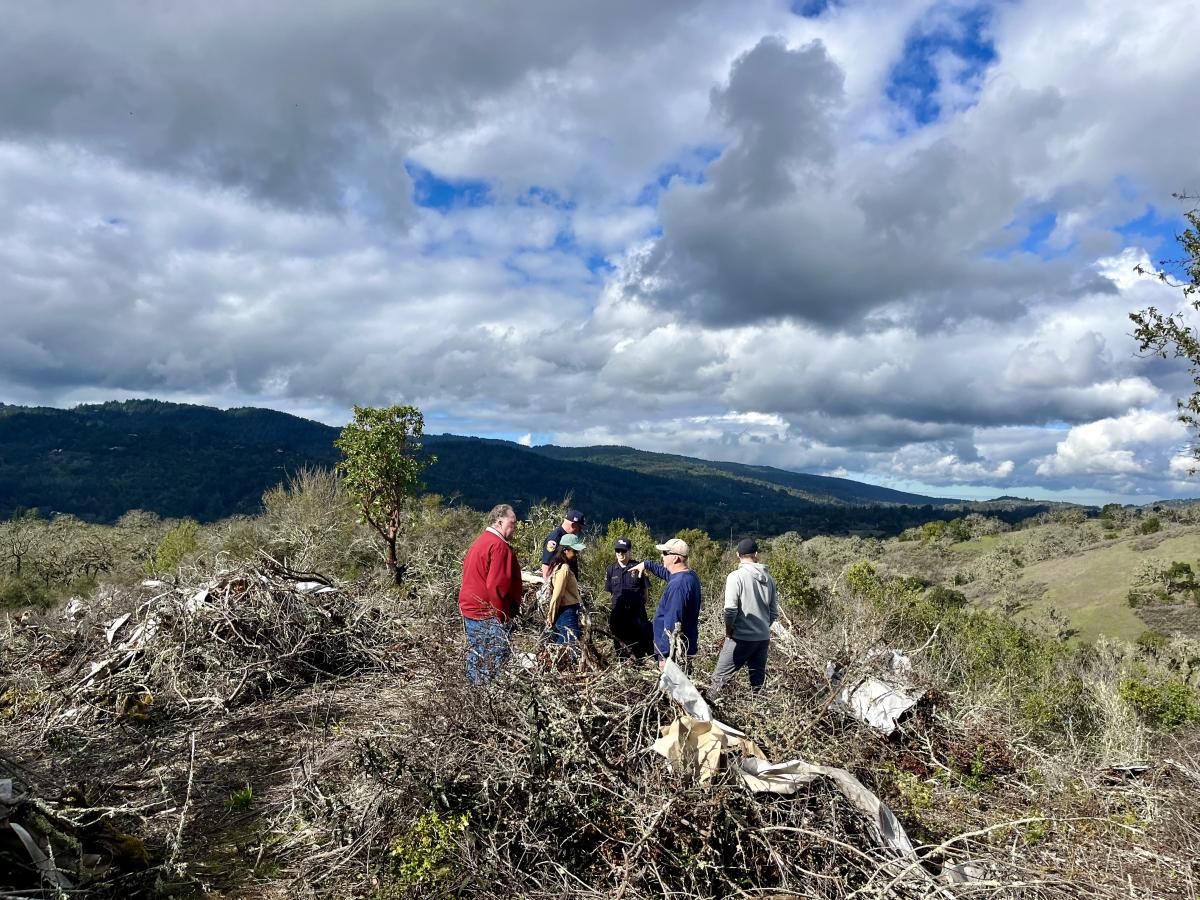Bringing Good Fire Back to the Land - Prescribed Burning at Jasper Ridge

Following the Jasper Ridge Biological Preserve – 'Ootchamin 'Ooyakma (JR'O'O) Recommendations for Merging Fire Fuel Mitigation with Stewardship Practices white paper, we are ready to reintroduce good fire back to the preserve as part of our stewardship plan. JR'O'O previously conducted a few small controlled burns as part of the Global Change Experiment in 2011, and in grasslands in 2001; next month's pile burn will allow us to scale up efforts to use controlled fire, or prescribed fire, to reduce fuels and mitigate wildfire risk. (*See below for how we use these terms)
Summarizing our work, Phase 1 of our fuel reduction program occurred in the summer and fall of 2023 along Sand Hill Road and Westridge. In both these locations a shaded or complete fuel break was created along the fence line and extending 100’ to 300’ into the preserve, covering approximately 85 acres. Contracted hand crews removed understory vegetation, limbed up trees, and removed selected trees to create spacing, which can help mitigate the spread of a high-intensity wildfire.

Picture taken from trail along fenceline looking at small oak trees which have lower limbs cut and left at base of tree. In background a crew of 4 people are chipping cut material using a tracked chipper attached to a pickup truck.
Where accessible, crews chipped the material and redistributed it by spreading it on the ground. However, in several areas along Westridge chipper accessibility is limited. In these areas, crews created piles approximately 4’ x 4’, which were covered in craft paper to keep partially dry and left to settle for several months. This plan was developed by JR'O'O staff, Stanford main-campus colleagues, and consulting forester, with support from local fire agencies (CAL FIRE and Woodside Fire Protection District). The controlled pile burn will be a way to reduce and remove fuels in the fuel break created in the mixed chaparral and oak woodland vegetation.

Piles created from chaparral vegetation near fence line. Piles are covered with craft paper to keep them partially dry, which will aid in ignition during planned burns.
To prepare for the pile burns, JR'O'O staff has coordinated closely with CAL FIRE and Woodside Fire Protection District to inform and include them in the planning process. Both agencies have been fully supportive of efforts to reduce fuels and mitigate wildfire risk at JR'O'O, which supports the larger neighboring community as well. Stanford has also engaged a NWGC qualified BurnBoss to create a burn plan that details safety, weather conditions, logistics, protocols, environmental and cultural sensitivities and will complete all necessary air quality and burning permits.

CAL FIRE staff visiting the prepared pile burn area with consulting BurnBoss, JR'O'O staff, LBRE staff, and campus Fire Marshal. CAL FIRE review is a mandatory requirement before a Burn Permit is issued.
Burning is tentatively planned for the week of March 4, 2024, and will last approximately 3-5 days, with a crew of 20 experienced personnel working under the supervision of the BurnBoss. Exact dates of burning are dependent upon the prescription window that includes weather, moisture levels, wind, and environmental conditions.
*Controlled burning, which is also called prescribed burning, and sometimes colloquially as “good fire” is an intentional human-ignited and managed fire. When used for fuel reduction, it allows fire to be included in the natural processes of fire-adapted ecosystems where it has previously been suppressed. When controlled and managed, these fires remove fuels and burn at lower intensities compared to high-intensity wildfires that are a greater safety hazard. The fires are “prescribed” because they are designed specifically for a location and only initiated under specific safety, weather, and environmental conditions. The fire is considered “good” because it benefits the ecosystem, which is a quality understood by many cultures globally. Many indigenous peoples who have extensive Traditional Ecological Knowledge related to burning in different seasons and at different intervals to promote the growth of specific species, clear brush, and create habitat. Fire can also play a role in building community and in ceremonial practices, which is distinguished from prescribed burning and identified as cultural burning.



